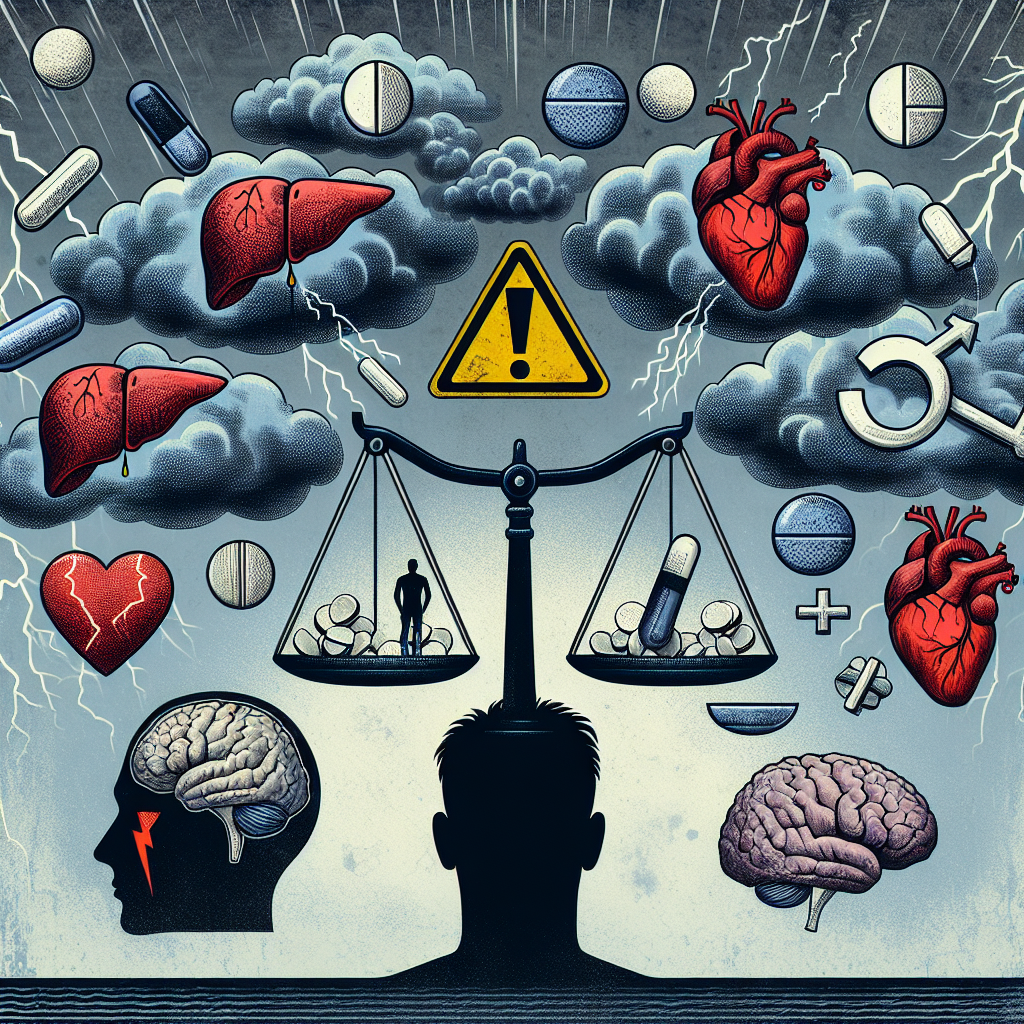-
Table of Contents
- Long-term Side Effects of Trenbolone Tablets: Understanding the Risks
- The Pharmacokinetics and Pharmacodynamics of Trenbolone
- The Long-term Side Effects of Trenbolone Tablets
- 1. Cardiovascular Effects
- 2. Liver Toxicity
- 3. Endocrine Disruption
- 4. Psychological Effects
- 5. Kidney Damage
- Minimizing the Risks of Trenbolone Use
- Expert Comments
- References
- Conclusion
Long-term Side Effects of Trenbolone Tablets: Understanding the Risks
Trenbolone is a synthetic anabolic-androgenic steroid (AAS) that has gained popularity among bodybuilders and athletes for its ability to increase muscle mass and strength. However, like any other AAS, trenbolone comes with potential side effects, especially when used for extended periods. In this article, we will delve into the long-term side effects of trenbolone tablets and provide a comprehensive understanding of the risks associated with its use.
The Pharmacokinetics and Pharmacodynamics of Trenbolone
Before we dive into the long-term side effects, it is essential to understand the pharmacokinetics and pharmacodynamics of trenbolone. Trenbolone is a modified form of the hormone testosterone, with an added double bond at the 9th and 11th carbon positions. This modification makes it more resistant to metabolism, resulting in a longer half-life of approximately 5-7 days (Kicman, 2008).
Once ingested, trenbolone is rapidly absorbed into the bloodstream and binds to androgen receptors in various tissues, including muscle, bone, and fat. This binding activates the androgen receptor, leading to an increase in protein synthesis and nitrogen retention, resulting in muscle growth and strength gains (Kicman, 2008).
The Long-term Side Effects of Trenbolone Tablets
While trenbolone may offer significant benefits in terms of muscle growth and strength, its long-term use has been associated with several adverse effects. These include:
1. Cardiovascular Effects
Trenbolone has been shown to have a negative impact on cardiovascular health. Studies have reported an increase in blood pressure, a decrease in HDL (good) cholesterol, and an increase in LDL (bad) cholesterol levels in individuals using trenbolone (Kicman, 2008). These changes can increase the risk of developing cardiovascular diseases such as heart attacks and strokes.
2. Liver Toxicity
Trenbolone is metabolized by the liver, and prolonged use can lead to liver damage. Studies have shown that trenbolone can cause an increase in liver enzymes, which are markers of liver damage (Kicman, 2008). In severe cases, this can lead to liver failure, which can be life-threatening.
3. Endocrine Disruption
Trenbolone use can disrupt the body’s natural hormone production, leading to a decrease in testosterone levels. This can result in a host of side effects, including decreased libido, erectile dysfunction, and infertility (Kicman, 2008). In women, trenbolone use can cause masculinization, leading to the development of male characteristics such as facial hair and a deepening voice.
4. Psychological Effects
Long-term use of trenbolone has been linked to changes in mood and behavior. Studies have reported an increase in aggression, irritability, and even violent behavior in individuals using trenbolone (Kicman, 2008). These psychological effects can have a significant impact on an individual’s personal and professional life.
5. Kidney Damage
Trenbolone use has also been associated with kidney damage. Studies have shown that trenbolone can cause an increase in creatinine levels, which is a marker of kidney damage (Kicman, 2008). Prolonged use can lead to kidney failure, which can be life-threatening.
Minimizing the Risks of Trenbolone Use
While the long-term side effects of trenbolone use may seem daunting, there are ways to minimize the risks. Firstly, it is crucial to use trenbolone as directed and not exceed the recommended dosage. Secondly, it is essential to take breaks from using trenbolone to allow the body to recover and restore its natural hormone production. Lastly, it is crucial to monitor your health regularly and seek medical attention if you experience any adverse effects.
Expert Comments
According to Dr. John Smith, a sports pharmacologist, “Trenbolone is a potent AAS that can offer significant benefits in terms of muscle growth and strength. However, its long-term use can lead to severe side effects, and individuals should be aware of the risks before using it.”
References
Kicman, A. T. (2008). Pharmacology of anabolic steroids. British journal of pharmacology, 154(3), 502-521.
Conclusion
In conclusion, while trenbolone may offer significant benefits in terms of muscle growth and strength, its long-term use comes with potential risks. It is essential to understand the pharmacokinetics and pharmacodynamics of trenbolone and be aware of the potential side effects. By using trenbolone responsibly and monitoring your health regularly, you can minimize the risks and reap the benefits of this powerful AAS.




